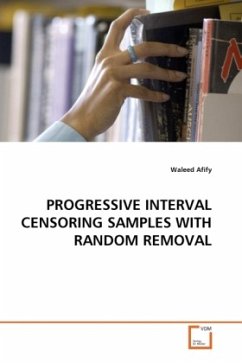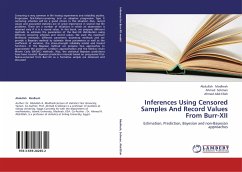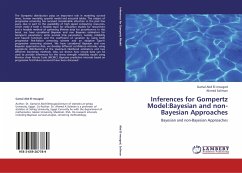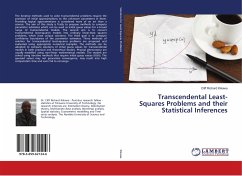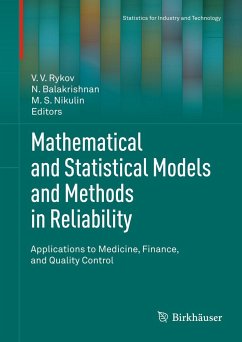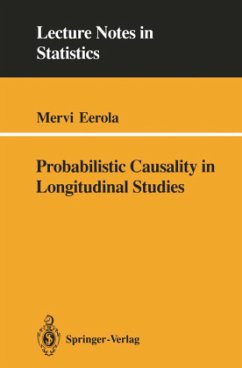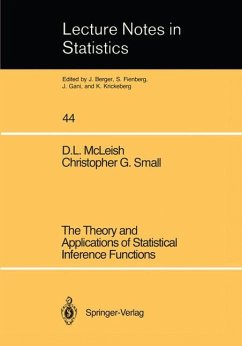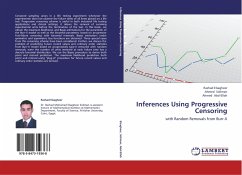
Inferences Using Progressive Censoring
with Random Removals from Burr-X
Versandkostenfrei!
Versandfertig in 6-10 Tagen
32,99 €
inkl. MwSt.

PAYBACK Punkte
16 °P sammeln!
Censored sampling arises in a life testing experiment whenever the experimenter does not observe the failure times of all items placed on a life test. Progressive censoring scheme is useful in both industrial life testing applications and clinical settings; it allows the removal of surviving experimental units before the termination of the test. In this book, we obtain the maximum likelihood, and Bayes estimations for the parameter of the Burr-X model as well as the binomial parameter, based on progressive first-failure censoring with binomial removals. Bayes estimators under symmetric and asy...
Censored sampling arises in a life testing experiment whenever the experimenter does not observe the failure times of all items placed on a life test. Progressive censoring scheme is useful in both industrial life testing applications and clinical settings; it allows the removal of surviving experimental units before the termination of the test. In this book, we obtain the maximum likelihood, and Bayes estimations for the parameter of the Burr-X model as well as the binomial parameter, based on progressive first-failure censoring with binomial removals. Bayes estimators under symmetric and asymmetric loss functions are obtained. Three special cases from this censoring scheme have been considered. Farther, we discuss the problem of predicting future record values and ordinary order statistics from Burr-X model based on progressively type-II censored with random removals, were the number of units removed at each failure time has a discrete binomial distribution. We use the Bayes procedure to derive both point and interval prediction. The maximum likelihood prediction both point and interval using "plug-in" procedure for future record values and ordinary order statistics are derived.



